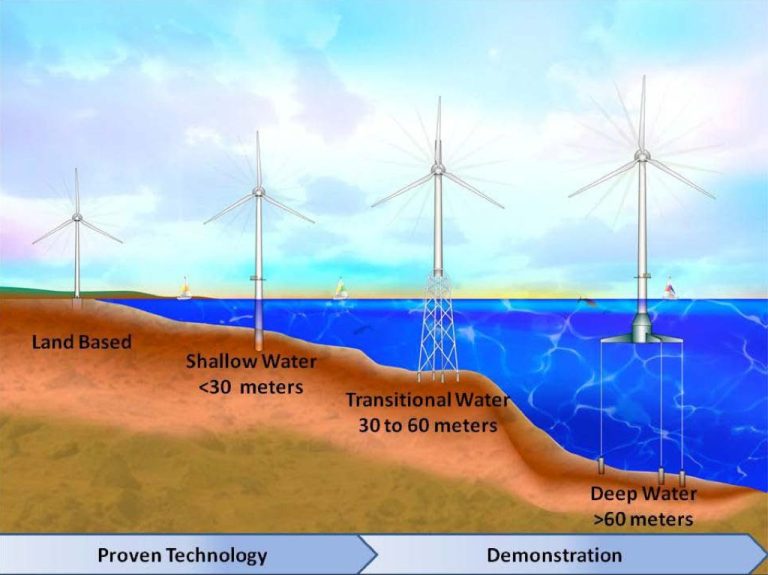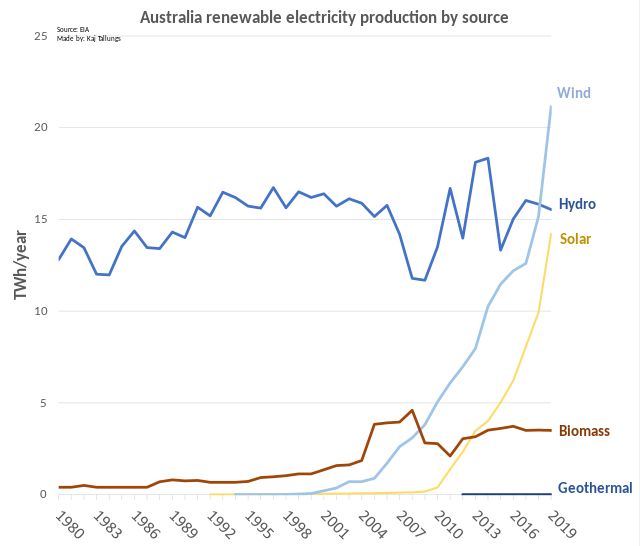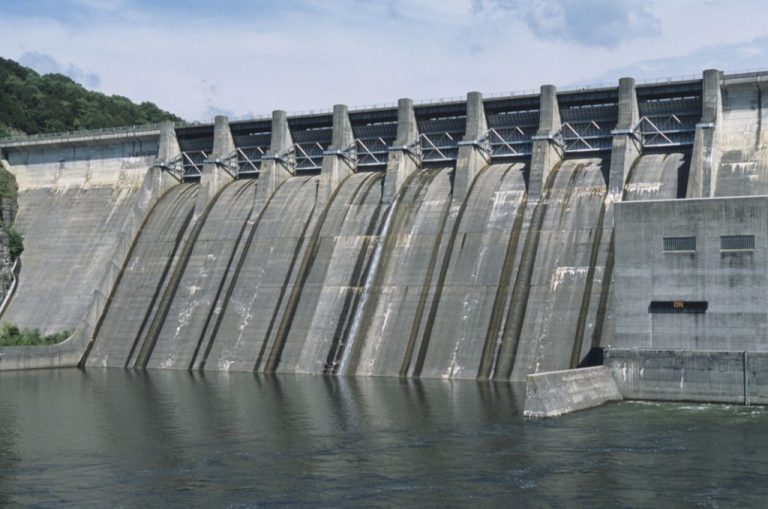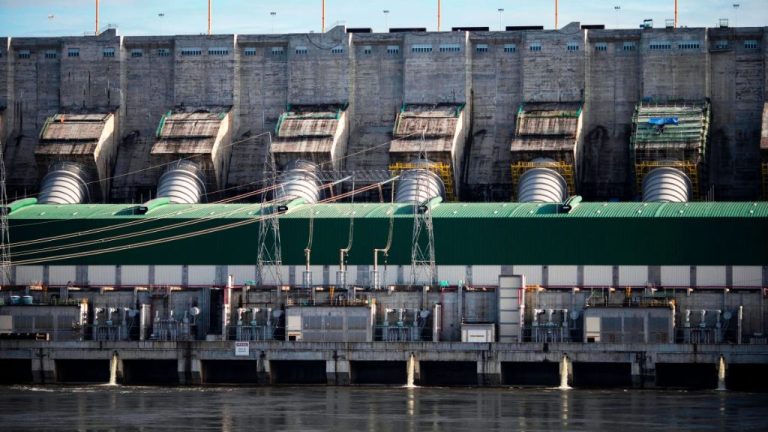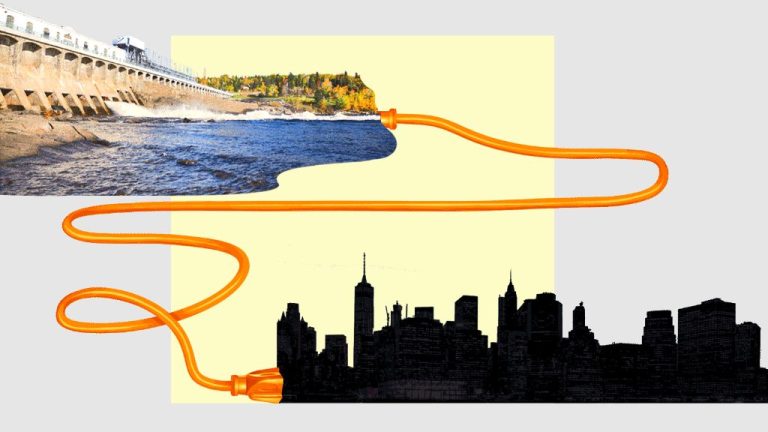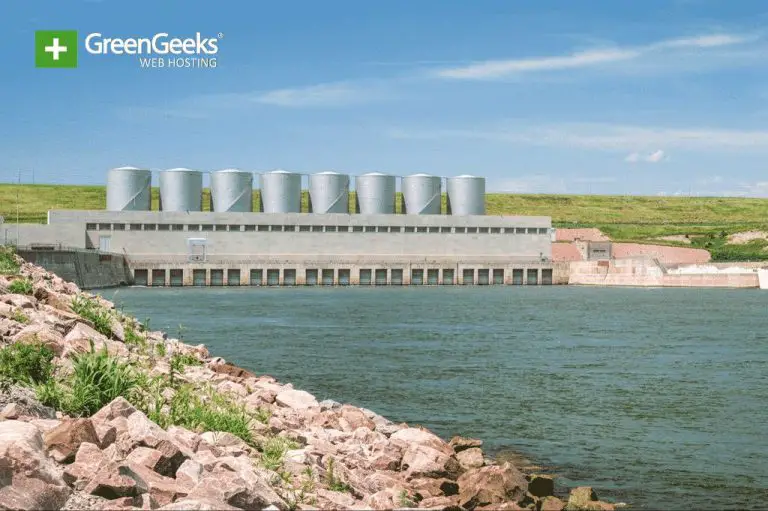Which Turbine Is Used In Kaligandaki Hydropower?
The Kaligandaki Hydropower Plant is a major hydroelectric power plant located in central Nepal on the Kaligandaki River. With an installed capacity of 144 megawatts (MW), it is the largest hydropower plant in Nepal and a vital source of electricity for the country.
The plant is located between Syangja and Tanahu districts in the Gandaki Province of Nepal. Construction on the project began in 1996 and it started operations in 2002. The power station contains three 48 MW Francis turbine-generators. The plant operates as a peaking run-of-river station, utilizing a 33 meter high concrete dam and underground desanding facilities.
The Kaligandaki Hydropower Plant generates over 700 GWh of electricity per year, meeting around 10% of Nepal’s electricity demand. The plant provides much needed power to support industry and development in Nepal. Its strategic location in the central region also allows it to transmit electricity to major load centers like Pokhara and Kathmandu.
Turbine Types
The two main types of hydro turbines used in hydropower plants are impulse and reaction turbines (Department of Energy).
Impulse turbines, like Pelton wheels, use the velocity of water to move the turbine runner and discharge water to the tailrace with very little pressure. Water jets hit spoon-shaped buckets arranged around the runner, causing it to spin. These turbines are used for high head sites with large water flow (Enel Green Power).
Reaction turbines, like Francis and Kaplan turbines, use water pressure as well as velocity to generate movement. Water flows through the turbine runner, discharging into the tailrace with reduced pressure. Francis turbines are used for medium head sites, while Kaplan turbines are used for low head sites (Enel Green Power).
Turbine Selection
Selecting the optimal turbine type for a hydropower plant depends on several key factors. According to the U.S. Department of Energy, the most important factors are the height from the water intake to the turbine and the rate of flow through the penstock [1]. The Constructor provides more details on key selection criteria:
- Head – The height the water falls from the intake to the turbine. Higher heads allow for higher pressure turbines.
- Specific speed – The idealized rotational speed for a given head and flow rate combination. Used to match a turbine design to conditions.
- Rotational speed – The revolutions per minute the turbine operates at. Impacts generator selection.
- Efficiency – Each turbine type has an optimal efficiency range for head height and flow rate.
- Cavitation – The formation of vapor bubbles in low pressure zones, which can damage the turbine. Higher heads increase cavitation risk.
The turbine selection aims to maximize the efficiency for the given head height and flow rate conditions at the site. Efficiency charts demonstrate the ideal operating ranges for each turbine type. Factors like pipeline length also impact the decision. Overall, selecting the right turbine model ensures optimal power output and long-term reliability.
Kaligandaki Turbines
The Kaligandaki Hydropower Plant operates 6 x 25MW Francis turbine-generators [1] to produce 144MW. The turbines are vertical shaft Francis type designed to handle high sediment loads common in the Himalayas. The turbines have a rated head of 87m and rotate at 214.3 RPM generating 25MW at 11.11 kV [2].
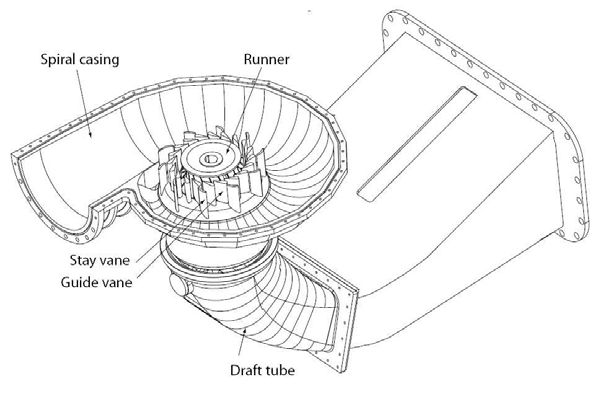
The turbines were manufactured by Voith Hydro GmbH & Co in Germany. They are single runner vertical shaft Francis turbines with 20 blades. The spiral casings are fabricated steel and the wicket gates are stainless steel. The runner diameter is 3100mm.
The turbines were designed and engineered specifically for the high sediment conditions in the Kaligandaki river. Features include a large stay vanes opening area and flattenStay vanes leading edges to minimize sediment deposition. The labyrinth seals and shaft couplings were also designed to withstand the abrasive wear caused by sediments.
Turbine Specs
The Kaligandaki A hydropower station utilizes 3 x 48MW Francis turbines manufactured by Andritz Hydro. Each turbine has a rated head of 136m and flow rate of 100 m3/s (Wikipedia). The turbine runner diameter is 3.5m with a rotational speed of 214.3 rpm. The turbines were designed and built specifically for the Kaligandaki A project with components like the penstock, generator, and control systems supplied as a complete package by Andritz Hydro (Power Technology).
With 3 units in operation, the total installed capacity of the power station is 144MW. Each unit has a maximum hydraulic capacity of 100 m3/s and estimated annual generation of 457 GWh (NWRMAP).
Turbine Features
The Kaligandaki hydropower plant utilizes vertical Francis turbines to generate electricity. Francis turbines are a reaction turbine type that is well-suited for medium to high head hydropower applications like Kaligandaki. Some notable features of the Francis turbines used at Kaligandaki include:
High efficiency – The turbines used at Kaligandaki have a design efficiency of over 90%, maximizing power output for the available water flow and head height.
Adjustable blades – The turbine blades can adjust their angle to optimize performance under different flow conditions. This flexibility helps maximize power output as river flows fluctuate.
Optimized for high heads – With a gross head of 497m at Kaligandaki, the turbines are engineered to perform well under such high hydraulic heads, avoiding issues like cavitation damage.
Compact design – The vertical orientation and Francis design allows the turbines to be relatively compact, important in the confined spaces of the underground powerhouse.
Rugged construction – The turbine components are engineered for longevity and reliability considering the remote location and sediment-laden river water.
Based on this source, the turbines at Kaligandaki are high-performance Francis turbines well-suited for the site’s high head and varying river flows.
Turbine Installation
The process of installing hydro turbines requires careful planning and execution. According to Micro Hydro Turbine Installation Process, the main steps involve transporting the turbine components to the site, assembling and aligning them properly, and testing the installation.
First, the turbine parts like the runner, shaft, wicket gates, and casing must be transported to the site. This may require special equipment like cranes depending on the size and weight. The parts are then assembled according to the manufacturer’s specifications. Proper alignment of the shaft and precise fitting of the turbine casing is critical. Any misalignment can lead to dangerous vibrations during operation.
Once assembled, the turbine installation must be rigorously tested. This involves checking that all parts are securely fitted, filling the penstock to check for leaks, and running the turbine at different loads to verify smooth operation. Only after thorough testing can the turbine be commissioned and handed over to the operating team.
Turbine Maintenance
Routine maintenance of hydro turbines is critical for ensuring efficient and reliable operation of hydropower plants. Some key maintenance procedures include (source):
- Regular lubrication of bearings, gearboxes, and other moving parts
- Inspection and replacement of worn or damaged components like wicket gates, runner blades, shafts, etc.
- Testing and calibration of instrumentation and control systems
- Cleaning debris and silt from water passages
Accessing turbines for inspection and repairs can be challenging given their size and location within dams and powerhouses. Often special rigging, scaffolding, or even underwater diving is required (source). Periodic major overhauls involve complete disassembly, inspection, and rebuild of the turbine and associated components.
With routine maintenance and monitoring, issues like vibration, leaks, erosion, and performance deterioration can be identified early and addressed to maximize turbine lifespan.
Turbine Lifespan
Hydropower turbines generally have long operational lifespans if maintained properly. According to the Indiana Office of Energy Development, the average lifespan of a hydroelectric facility is 100 years, but with ongoing upgrades and maintenance, turbines can operate well beyond that timeframe [1]. Proper maintenance like replacing worn parts, lubricating bearings, and cleaning debris from the turbines is key to extending operational lifetimes.
The expected replacement schedule for hydropower turbine parts varies. Generator windings may need rewound every 15-30 years. Turbine runners may need replaced every 50 years. Major overhauls are recommended every 5-10 years to replace worn parts like seals, bushings, and bearings. With proper maintenance and replacements when needed, hydroelectric turbines can generate power for many decades.
Conclusion
The turbines used in the Kaligandaki hydropower project are vertical axis Francis turbines. These were selected due to their high efficiency and ability to operate under a wide range of water flow conditions. The turbines have a rated capacity of 25MW each and operate at a speed of 214.3 rpm. Key features include the spiral casing, stay vane, guide vane, runner, and draft tube. Since installation in the early 2000s, the turbines have performed reliably with proper maintenance. They are expected to have a lifespan of over 40 years. In summary, the advanced Francis turbines selected for the Kaligandaki project allow it to generate significant clean electricity for Nepal through an optimal combination of efficiency, adaptability, and longevity.

